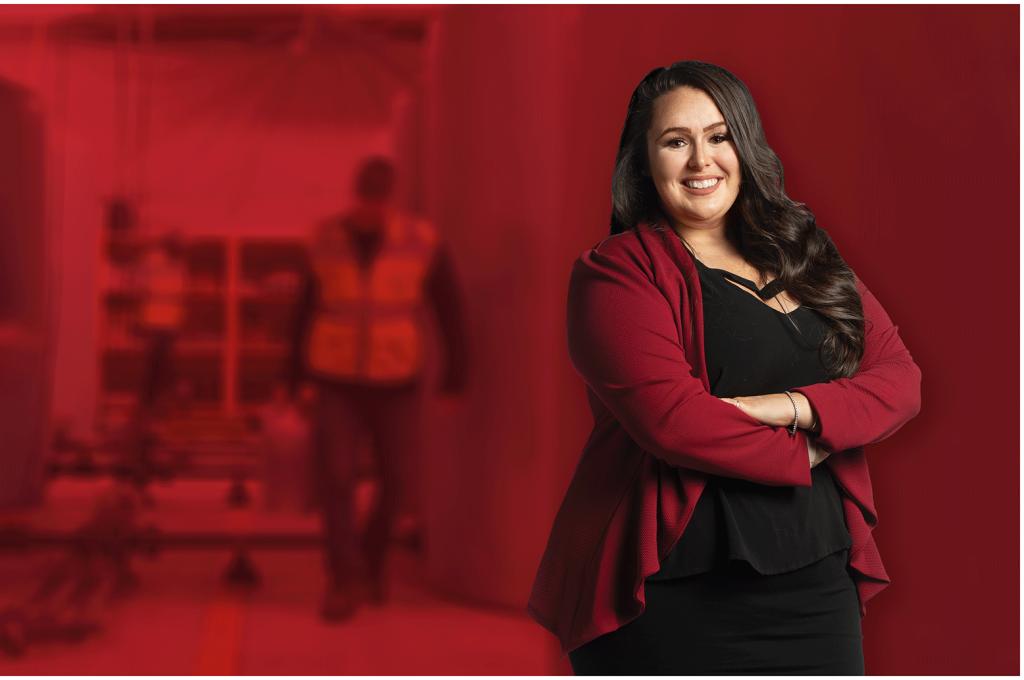There are 67,000 kilometres of unpaved roads in Manitoba, enough to wrap around the Earth about one-and-a-half times. That’s a 67,000-kilometre risk of ruts, potholes and giant dust-clouds.
Brandon University geology professor Hamid Mumin lives beside one of those roads just outside Brandon, Man., and understands the problem well. When he learned about Cypher Environmental at a mining convention, he saw a solution.
Cypher produces EarthZyme, a liquid catalyst which, when mixed with clay, creates a strong, damage-resistant surface. While the Winnipeg-based company sells the catalyst in countries around the world, partnering with Mumin and Brandon University was key to expanding in its own backyard, says Cypher’s vice president of research and development Teaghan Wellman.
“Here in Manitoba of course the weather conditions are a lot different than in other areas of the world,” she says. “It’s one thing to say the product works in Costa Rica or China. But to have local data and local evidence to suggest and validate these claims really allowed us to move forward with our innovation.”
With Mumin’s research in hand showing how EarthZyme works in a colder climate, Cypher has sold its product in Manitoba, British Columbia, Alberta and the Northwest Territories. The company is now looking to expand across the country.
Cypher has also increased manufacturing at its 18,000-square foot facility, boosted staff from 20 to 25, and plans to hire another two to five employees in the coming year.
“The payback is very quick”
Mumin not only showed EarthZyme worked just as well in Manitoba as in warmer regions, he was also able show cost-savings. He and his team recently used the catalyst to resurface a 5-kilometre section of gravel quarry service roads travelled daily by hundreds of heavy trucks in the municipality of Cornwallis, Manitoba, near Brandon.
“They said they’re saving $100,000 a year in maintenance, and the cost to build the road was $225,000. So the payback can be very quick,” says Mumin. “The heavier the traffic is, the better for our roads, because of the constant compaction, and that’s the exact opposite of an asphalt road.”
How it works
The catalyst — a proprietary mixture of non-toxic, naturally-occurring compounds — causes clay particles to bond to each other and strongly bind the road aggregate.
“The product works to increase soil compaction,” says Wellman. “Higher compaction means less opportunities for water to penetrate through, freeze, and cause that cracking which causes pitting, rutting and potholes.”
The challenge is that EarthZyme requires a certain type of clay. While Manitoba (and most parts of Canada) have the right kind, it’s not usually part of the gravel aggregate mixture used in local roads
But there is an opportunity to mix the right type of clay into the road aggregate prior to resurfacing. So Mumin’s research team developed methods to use Cypher’s catalyst — along with local clay-aggregate mixtures — to resurface existing gravel roads, radically reducing dust and damage, and providing a long-lasting durable road surface.
Zeroing in on the right kind of clay
“A large part of what we do is testing the clays to make sure that they are strongly cohesive,” says Mumin. Cohesive clays bond with water, but mix in EarthZyme and the clay instead bonds with itself, creating a strong, self-repairing surface.
Working in CFI-funded laboratories, Mumin tests local clays for strength and compaction characteristics, identifying those that can be manipulated to create the strongest bonds.
Those clays can then be mixed with aggregate in a quarry and brought to an existing, graded gravel road where the clay-aggregate mixture is in turn mixed with EarthZyme. This clay-aggregate-EarthZyme mixture is then spread on the road and compacted.
“This has taken off more than anything I’ve ever done,” says Mumin. “The interest from the public is amazing. I guess it’s because people understand the problem we are working to solve.”
Return to the "Research is my business partner" collection





